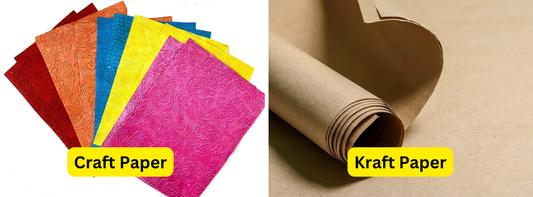Disposable cups are ubiquitous in today’s world, catering to the convenience needs of consumers, businesses, and event planners alike. But with increasing awareness around environmental sustainability and health, people are questioning which disposable option is better: paper or plastic. This article explores the environmental impact, cost, durability, and usability of paper cups vs. plastic cups to help guide more sustainable and practical choices.
- The Ultimate Guide on How to Choose the Right Paper Cup
- Should You Use Single Wall Cup or Double Wall Coffee Cup?
- The Essential Companion: How Paper Cup Lids Make a Difference
- What Are The Best Paper Cups To Use With Hot Water?
- Is Uncoated Paper Cups Really Useful for Coffee Shops?
Paper Cups vs. Plastic Cups: An Overview
Paper Cups
Paper cups are typically made from renewable resources, primarily paperboard, which is coated with a thin plastic or wax layer to prevent leakage. They come in various types, including:
- Single-wall: Single-layered for basic insulation, often used with hot sleeves.
- Double-wall: Extra layer provides better insulation, suited for hot beverages.
- Coated options: Coatings like polyethylene (PE) and bioplastics (PLA) improve durability but impact recyclability.

Plastic Cups
Plastic cups are generally made from petroleum-based plastics, including:
- Polyethylene Terephthalate (PET): Clear and recyclable, commonly used for cold beverages.
- Polypropylene (PP): Sturdy and often used for reusable options but less commonly recycled.

| Feature | Paper Cups | Plastic Cups |
|---|---|---|
| Material Source | Renewable (paperboard) | Non-renewable (petroleum) |
| Recyclability | Limited due to coatings | Often recyclable (PET) |
| Biodegradability | Biodegradable with limits | Long-lasting in landfills |
| Insulation | Effective for hot drinks | Mostly for cold drinks |
Environmental Impact of Paper Cups vs. Plastic Cups
Manufacturing Process
- Paper Cups: Production involves cutting trees, consuming water, and using energy. Although paper is renewable, deforestation and resource use make the process impactful.
- Plastic Cups: Made from petroleum, plastic production contributes significantly to carbon emissions. The energy-intensive process also has a larger environmental footprint than paper.
Decomposition and Biodegradability
- Paper Cups: Paper cups with plastic or wax coatings take longer to decompose than uncoated paper, but some are compostable under specific conditions.
- Plastic Cups: Plastic can persist in landfills for hundreds of years. While some plastics can be recycled, their biodegradability is limited.
Recyclability and Waste Management
- Paper Cups: Despite the paper base, recycling coated cups is complex and not widely supported. Special facilities are often required.
- Plastic Cups: PET cups are commonly recyclable, but polypropylene (PP) cups face more recycling limitations. Both types need proper infrastructure for effective recycling.
Cost Comparison: Paper Cups vs. Plastic Cups
Price per Unit
Plastic cups are generally cheaper per unit than paper cups due to lower material and manufacturing costs.
Factors Affecting Cost
- Paper Cups: Cost can rise with higher-quality materials and additional layers for insulation.
- Plastic Cups: Low-cost production makes plastic more affordable, but sustainability considerations can increase expenses for eco-friendlier options.
Long-term Costs
Waste disposal and recycling costs also vary based on material, with plastic waste often leading to higher environmental fees over time.
Durability and Performance: Paper Cups vs. Plastic Cups
Temperature Resistance
- Paper Cups: Designed to handle both hot and cold beverages, especially when lined or double-walled.
- Plastic Cups: Best for cold drinks; exposure to high temperatures can warp or leach chemicals in some plastics.
Strength and Stability
- Paper Cups: Generally sturdy with reinforced layers but can weaken when holding liquids for extended periods.
- Plastic Cups: More flexible, durable, and resistant to leaks, but may bend or crack under high pressure.
Customer Perception and Brand Image
Eco-Conscious Branding
Brands adopting paper cups often align with an eco-friendly image, appealing to environmentally conscious consumers. Plastic cups, however, can negatively affect brand perception due to their association with environmental harm.
Customization and Printing
Both cup types allow for custom branding, though paper cups tend to offer a more polished, aesthetically pleasing result. This can be a key consideration for businesses seeking alignment between sustainability and brand values.
Health and Safety Considerations
Paper Cups
Some paper cups contain plastic or wax linings, which may leach chemicals into hot drinks. It’s essential for manufacturers to ensure that these coatings are food-safe and stable at high temperatures.
Plastic Cups
Plastic cups may contain BPA or phthalates, especially if made from less stable plastics. Hot liquids can exacerbate chemical leaching, which is why plastic cups are typically reserved for cold beverages.
Best Uses for Paper Cups vs. Plastic Cups
Best Situations for Paper Cups
- Eco-conscious Events: Paper cups are ideal for businesses focusing on sustainability.
- Hot Beverage Services: Common in coffee shops and cafes due to their heat insulation.
Best Situations for Plastic Cups
- Cold Beverage Events: Plastic cups are durable for outdoor gatherings and cold drinks.
- High-Volume Uses: Fast food and high-traffic events often benefit from plastic’s low cost and durability.
Considerations for Business and Personal Use
Whether planning a one-time event or purchasing for business needs, consider event duration, waste management, and beverage type.
FAQs: Paper Cups vs. Plastic Cups
Are paper cups more eco-friendly than plastic cups?
Yes, generally. Paper is renewable and decomposes faster, though some coatings affect biodegradability.
Can plastic cups be recycled?
Yes, but recycling depends on the plastic type. PET is commonly recyclable, while others like polypropylene may have limited recycling options.
Which cup type is safer for hot drinks?
Paper cups are safer for hot beverages; plastic cups can leach chemicals when exposed to heat.
Do paper cups break down faster than plastic cups?
Yes, paper cups decompose more rapidly, especially if uncoated, while plastic cups can last centuries.
How long does it take for a plastic cup to decompose?
Plastic cups can persist in landfills for 500 years or more, depending on environmental conditions.
What type of cups should I use for large events?
For cold drinks, plastic cups are cost-effective and durable. For eco-conscious events, paper cups offer a sustainable choice.
Are there any health concerns with using plastic cups?
Yes, particularly with hot drinks; plastic cups may leach chemicals like BPA, especially if not labeled as food-safe.
Conclusion
When choosing between paper and plastic cups, considerations extend beyond convenience. While paper cups often align better with environmental and brand-conscious goals, plastic cups offer durability and cost advantages. Whether selecting cups for personal use or business, prioritizing sustainability and use-case suitability will help guide an informed decision.









